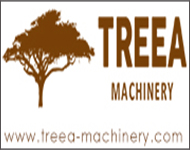- Construction Nears for ELCT Facility Backed by Samia’s 250 Million Boost
- KeNHA Kicks Off Construction of Major Kenya-South Sudan Road Project with AfDB Support
- Tanzania Government Allocates 100 Billion Shillings for Bridge Constructions in Lindi
- $46 Million Deal Signed for Crucial Isiolo-Mandera Road Construction Project
- Tanzania Government Set to Sign Agreement for Dodoma Stadium Construction
- Kenya Gears Up for AFCON 2027 with Major Stadium Upgrades and New Constructions
- AfDB Leads $1.2 Billion Financing Syndication for Tanzania’s SGR
- Government Kickstarts Sh8.1 Billion Equalisation Fund Projects across 34 Counties
- Tanzania Signs $35 Million Deal for Jangwani Bridge Project Construction
- Multi-Billion Road Project Set to Boost Thika’s Industrial and Economic Prospects
Kenya: Using Architectural Design to Boost Fire Safety in Buildings
The recent fire incident at Kenya's largest airport has refocused attention to whether most buildings are safe from fire accidents. As experts, architects can use design to boost fire safety for occupants and buildings.
A good architectural design should include fire escapes that are easily accessible and located at farthest corners from each other. For high-rise commercial buildings, fire escape stairs must be easily accessible and should end at the ground floor level without any ambiguity. This will prevent people descending from upper floors from going into the basement instead of the ground floor when seeking safety.
This requirement is usually enforced by local authorities when approving architectural plans. It is quite unfortunate however is that most county approval systems do not have fire officers who would add input during the approval process. For Nairobi city-county, the chief fire officer ensures that a building's design includes an appropriate fire escape. Older buildings built before the 90s had this enforced to the letter. Today however, it's not common to see buildings approved without fire escape stairs. Apt examples are the new residential flats in Nairobi.
Registered architects who are well trained do design buildings complete with fire escapes as is required of them. The building and construction sector has however been infiltrated by quacks, who are delivering sub-standard works. It is advisable that developers ensure they work with registered architects.
Fire hydrants
As a responsibility for local authorities, they should avail water points where fire brigades would easily get water in case of fire incidents.
Dry riser
A building should also have a dry riser, which is a ready pipe for the fire brigade to connect their water pipes into the building. When fire breaks out, fire fighters would force water up through the dry rise into sprinklers on each floor.
Wet riser
A building can also have wet risers; a series of pipes permanently filled with water from the building's storage tanks. Tanks should be designed such that exits for usage water are higher than those of wet risers. This way, when the water level in the tank is low, the building will lack water for use but will not lack water for firefighting since the exit will only be through the sprinkler system.
Smoke detectors
These are devices fixed onto the building ceiling and trigger an alarm and sprinkler system activation in case of fire. There are two types: ionisation and optical. Ionisation uses a radioactive isotope, Americium 241. It is more sensitive than optical, which uses a light beam that becomes diverted by the presence of smoke hence triggering the alarm or water sprinkler.
Fire retardant balloons
Balloons fixed in the ceiling filled with fire retardant air such as CO2 can also be used to quell fires. Once a fire begins, these balloons can be programmed to trigger the release of fire retardant gasses.
Luminous signs
Luminous paint that glows in the dark should be used to mark the entry/exit points in case of fire. When fire breaks out, rooms get dark, hence luminous signs would direct occupants to safety.
Smart buildings
With advance in technology, software that remotely communicates to the fire brigade on size of fire and exact location can be employed.
In a well designed building where the architect is working together with a mechanical engineer of building services, such firefighting technologies can be hard coded in buildings.
Posted on : 30 Nov,-0001
Buildmart is Africa's leading directory and market news website for the building and construction industry | Kenya | Tanzania | Rwanda | Ethiopia
Exhibitions In Africa
- 26th Buildexpo Kenya 2025
KICC, Nairobi, kenya
16 - 18, July 2025 - 10th Afriwood Kenya 2025
KICC, Nairobi, kenya
16 - 18, July 2025 - 10th LightExpo Kenya 2025
KICC, Nairobi, kenya
16 - 18, July 2025 - 09th Minexpo Africa 2025
KICC, Nairobi, Kenya
16 - 18, July 2025 - 26th Buildexpo Tanzania 2025
Diamond Jubilee Expo Center, Dar-es-Salaam, Tanzania
24 - 26, Sep 2025 - 09th Afriwood Tanzania 2025
Diamond Jubilee Expo Center, Dar-es-Salaam, Tanzania
24 - 26, Sep 2025 - 09th LightExpo Tanzania 2025
Diamond Jubilee Expo Center, Dar-es-Salaam, Tanzania
24 - 26, Sep 2025 - 09th Minexpo Tanzania 2025
Diamond Jubilee Expo Center, Dar-es-Salaam, Tanzania
24 - 26, Sep 2025





















